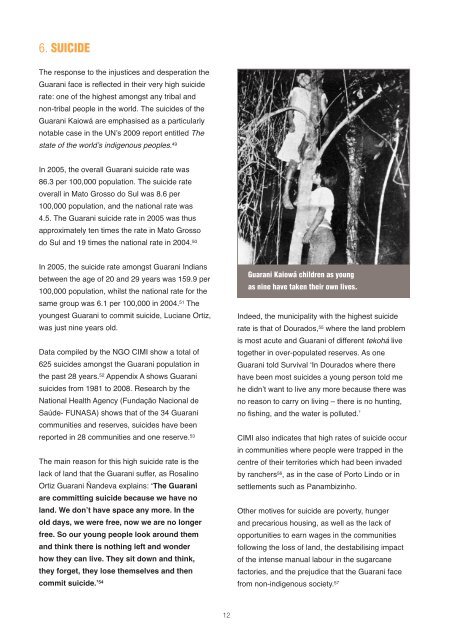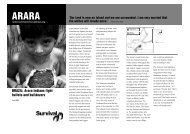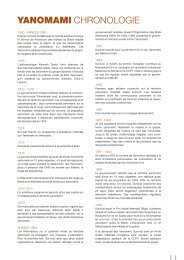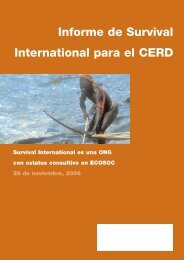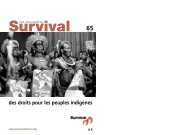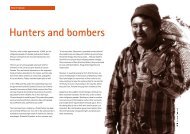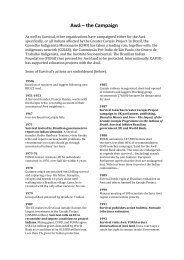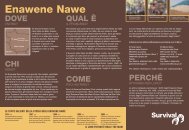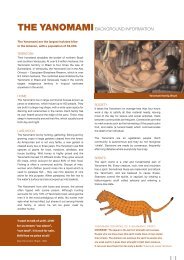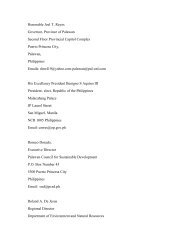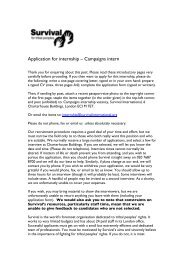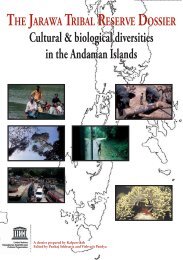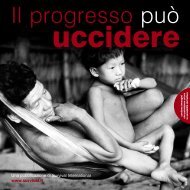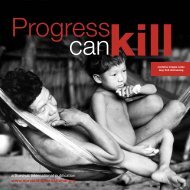violations of the rights of the guarani of mato grosso do sul state, brazil
violations of the rights of the guarani of mato grosso do sul state, brazil
violations of the rights of the guarani of mato grosso do sul state, brazil
Create successful ePaper yourself
Turn your PDF publications into a flip-book with our unique Google optimized e-Paper software.
6. SUICIDEThe response to <strong>the</strong> injustices and desperation <strong>the</strong>Guarani face is reflected in <strong>the</strong>ir very high suiciderate: one <strong>of</strong> <strong>the</strong> highest amongst any tribal andnon-tribal people in <strong>the</strong> world. The suicides <strong>of</strong> <strong>the</strong>Guarani Kaiowá are emphasised as a particularlynotable case in <strong>the</strong> UN’s 2009 report entitled The<strong>state</strong> <strong>of</strong> <strong>the</strong> world’s indigenous peoples. 49In 2005, <strong>the</strong> overall Guarani suicide rate was86.3 per 100,000 population. The suicide rateoverall in Mato Grosso <strong>do</strong> Sul was 8.6 per100,000 population, and <strong>the</strong> national rate was4.5. The Guarani suicide rate in 2005 was thusapproximately ten times <strong>the</strong> rate in Mato Grosso<strong>do</strong> Sul and 19 times <strong>the</strong> national rate in 2004. 50In 2005, <strong>the</strong> suicide rate amongst Guarani Indiansbetween <strong>the</strong> age <strong>of</strong> 20 and 29 years was 159.9 per100,000 population, whilst <strong>the</strong> national rate for <strong>the</strong>same group was 6.1 per 100,000 in 2004. 51 Theyoungest Guarani to commit suicide, Luciane Ortiz,was just nine years old.Data compiled by <strong>the</strong> NGO CIMI show a total <strong>of</strong>625 suicides amongst <strong>the</strong> Guarani population in<strong>the</strong> past 28 years. 52 Appendix A shows Guaranisuicides from 1981 to 2008. Research by <strong>the</strong>National Health Agency (Fundação Nacional deSaúde- FUNASA) shows that <strong>of</strong> <strong>the</strong> 34 Guaranicommunities and reserves, suicides have beenreported in 28 communities and one reserve. 53The main reason for this high suicide rate is <strong>the</strong>lack <strong>of</strong> land that <strong>the</strong> Guarani suffer, as RosalinoOrtiz Guarani Ñandeva explains: ‘The Guaraniare committing suicide because we have noland. We <strong>do</strong>n’t have space any more. In <strong>the</strong>old days, we were free, now we are no longerfree. So our young people look around <strong>the</strong>mand think <strong>the</strong>re is nothing left and wonderhow <strong>the</strong>y can live. They sit <strong>do</strong>wn and think,<strong>the</strong>y forget, <strong>the</strong>y lose <strong>the</strong>mselves and <strong>the</strong>ncommit suicide.’ 54Guarani Kaiowá children as youngas nine have taken <strong>the</strong>ir own lives.Indeed, <strong>the</strong> municipality with <strong>the</strong> highest suiciderate is that <strong>of</strong> Doura<strong>do</strong>s, 55 where <strong>the</strong> land problemis most acute and Guarani <strong>of</strong> different tekohá livetoge<strong>the</strong>r in over-populated reserves. As oneGuarani told Survival ‘In Doura<strong>do</strong>s where <strong>the</strong>rehave been most suicides a young person told mehe didn’t want to live any more because <strong>the</strong>re wasno reason to carry on living – <strong>the</strong>re is no hunting,no fishing, and <strong>the</strong> water is polluted.’CIMI also indicates that high rates <strong>of</strong> suicide occurin communities where people were trapped in <strong>the</strong>centre <strong>of</strong> <strong>the</strong>ir territories which had been invadedby ranchers 56 , as in <strong>the</strong> case <strong>of</strong> Porto Lin<strong>do</strong> or insettlements such as Panambizinho.O<strong>the</strong>r motives for suicide are poverty, hungerand precarious housing, as well as <strong>the</strong> lack <strong>of</strong>opportunities to earn wages in <strong>the</strong> communitiesfollowing <strong>the</strong> loss <strong>of</strong> land, <strong>the</strong> destabilising impact<strong>of</strong> <strong>the</strong> intense manual labour in <strong>the</strong> sugarcanefactories, and <strong>the</strong> prejudice that <strong>the</strong> Guarani facefrom non-indigenous society. 5712


